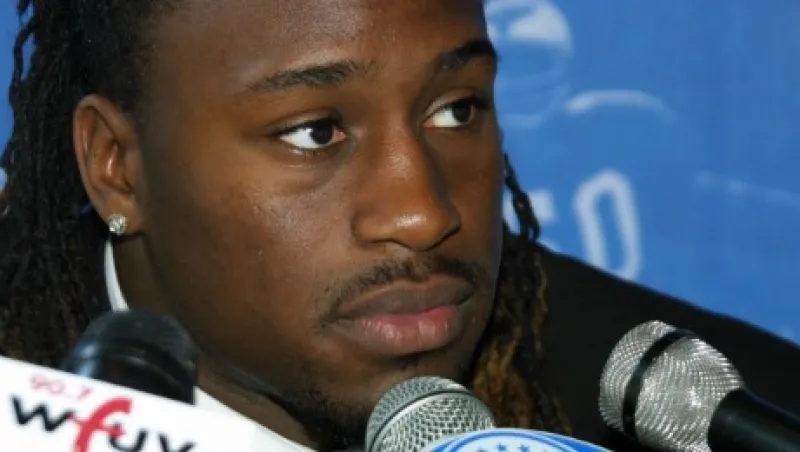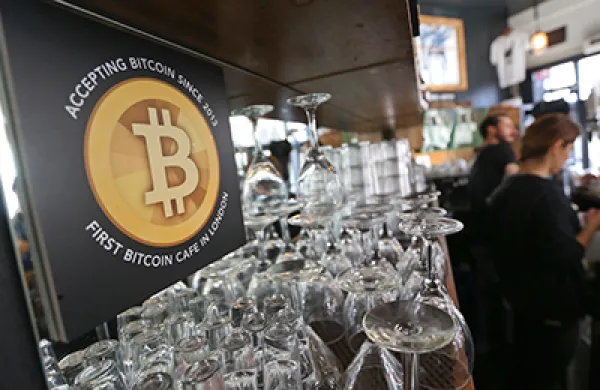American football players are used to being traded. Waking up a Dallas Cowboy and finding out you’ve been dealt to the Chicago Bears, say, is a risk that comes with the job. But Fantex Holdings is taking the trading of football players to a new level.
The San Francisco–based company has created securities backed by the earnings of six National Football League players. One of those players, Denver Broncos tight end Vernon Davis, will take the field in the Super Bowl on Sunday evening in Santa Clara, California.
Cornell (“Buck”) French, the company’s CEO and co-founder, touts the securities as a good diversification vehicle, a truly uncorrelated alternative-asset class. “What’s happening in China and the stock market doesn’t affect them,” French says. “And the income will dampen volatility.”
Investment analysts and sports industry professionals aren’t so sure that athlete-based derivatives are a winning play. “I wouldn’t recommend this to any of my clients,” says Dan Goldie, an independent financial adviser in Palo Alto, California, and once the No. 27–ranked tennis player in the world.
To be sure, Goldie and others say the securitizations make sense for some athletes. Under a typical deal, Fantex makes a lump-sum payment to an athlete in exchange for a set percentage of his lifetime earnings, on and off the field. Then the firm sells shares in the athlete to investors in an initial public offering.
Five of the six NFL players who have securities with Fantex have committed to pay out 10 percent of their earnings under their deals. Fantex keeps 5 percent of the athletes’ paybacks for itself and plans to pass along the rest of the income to investors as dividends. So far, the payments have ranged from $1.56 million for Mohamed Sanu, a wide receiver with the Cincinnati Bengals, to $7.94 million for Alshon Jeffery, a wide receiver with the Chicago Bears. Jeffery has agreed to pay out 13 percent of his earnings to his investors.
Fantex did its first IPO by offering shares in Davis in 2014. To date, the company has paid dividends on two athletes’ securities: $1.50 for Davis, and 20 cents for Sanu. French notes that the securities of all six athletes were sold for $10 at their IPOs, but those numbers should move to reflect the players’ perceived brand value over time. Four of the players have dropped below their IPO price, whereas two have risen above; prices range from $6 for Buffalo Bills backup quarterback E.J. Manuel to $12 for Jack Mewhort, an offensive lineman for the Indianapolis Colts.
Fantex’s board of directors includes John Elway, the former Broncos star-quarterback-turned-general-manager, and Duncan Niederauer, the former New York Stock Exchange CEO. The company plans to create securities for an additional four football players and then form a bundled unit based on the securities of all ten players, which will trade on the Nasdaq. Since Davis was first listed, however, trading volume has been negligible. “For all intents and purposes, it’s an illiquid market,” CEO French says. “It’s rare to find a buyer or seller for anything. More than 1,000 investors hold shares.
French says Fantex is careful about the athletes it selects. It targets NFL rookies who are starters and, it hopes, one to three years away from a big payday. NFL careers generally don’t last long. A rookie who makes the opening-day roster has a career of six years, on average, whereas those who are drafted in the first round last 9.3 years, according to NFL data. As for the issue of players getting into trouble off the field, “Character is No. 1 in who we target,” French says. “We do our due diligence. You can quantify risk.” There is no stock in Johnny Manziel, the Cleveland Browns quarterback who made headlines in recent weeks for possible assault against a former girlfriend and the subsequent attempt by his father to enroll him in rehab.
Athletes, especially football players, can easily get injured, severely limiting on-field earnings. Off-field income, both during and after players’ athletic careers, is no sure thing either. After their playing days are over, many athletes seek careers in broadcasting or coaching, but competition is intense in those fields for positions that pay well. Bottom line: “Athlete brands are notoriously unpredictable in their earning power,” says Phil de Picciotto, president of Octagon, a sports management firm in Norwalk, Connecticut.
Another issue for critics is that Fantex isn’t required to pay out dividends, regardless of how much money the athletes provide. The financial strength of Fantex itself will help determine the size of dividends. The company is under no obligation to pay any dividends, so if the company is losing money, the incentive would be to keep the funds rather than pay out dividends. Fantex also plans to make coinvestments with athletes and assist them in marketing.
Investors thus are left dependent on the business performance of Fantex, in addition to the performance of the athletes. “As an investor, what are you investing in?” Goldie asks rhetorically. “You’re investing in Fantex as a business, not the athletes.” This is akin to the one-time opportunity to buy shares in the Green Bay Packers, by which you get a handsome stock certificate but nothing else of financial value, says de Picciotto. “Buyers have an emotional investment. It’s not necessarily a great financial investment, but a good Christmas gift for the kids.”







